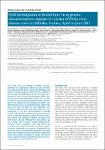Field investigation with real-time virus genetic characterisation support of a cluster of Ebola virus disease cases in Dubréka, Guinea, April to June 2015
Pini, Alessandro
Zomahoun, Delayo
Duraffour, Sophie
Derrough, Tarik
Charles, Myrna
Quick, Joshua
Loman, Nick
Cowley, Lauren
Leno, Mamadou
Ouedraogo, Nobila
Thiam, Oumou
Hernández-Romieu, Alfonso
Iko, Annie
Keita, Halimatou
Konate, Djiba
Soumah, Aboubacar Aboubak
Bouchouar, Etran
Ileka-Priouzeau, Samuel
Keita, Sakoba
Diallo, Boubacar
Cisse, Fode
Jansa, Josep
Carroll, Miles
Günther, Stephan
Severi, Ettore
Formenty, Pierre
On 11 May 2015, the Dubréka prefecture, Guinea, reported nine laboratory-confirmed cases of Ebola virus disease (EVD). None could be epidemiologically linked to cases previously reported in the prefecture. We describe the epidemiological and molecular investigations of this event. We used the Dubréka EVD registers and the Ebola treatment centre’s (ETC) records to characterise chains of transmission. Real-time field Ebola virus sequencing was employed to support epidemiological results. An epidemiological cluster of 32 cases was found, of which 27 were laboratory confirmed, 24 were isolated and 20 died. Real-time viral sequencing on 12 cases demonstrated SL3 lineage viruses with sequences differing by one to three nt inside a single phylogenetic cluster. For isolated cases, the average time between symptom onset and ETC referral was 2.8 days (interquartile range (IQR): 1–4). The average time between sample collection and molecular results’ availability was 3 days (IQR: 2–5). In an area with scarce resources, the genetic characterisation supported the outbreak investigations in real time, linking cases where epidemiological investigation was limited and reassuring that the responsible strain was already circulating in Guinea. We recommend coupling thorough epidemiological and genomic investigations to control EVD clusters.

